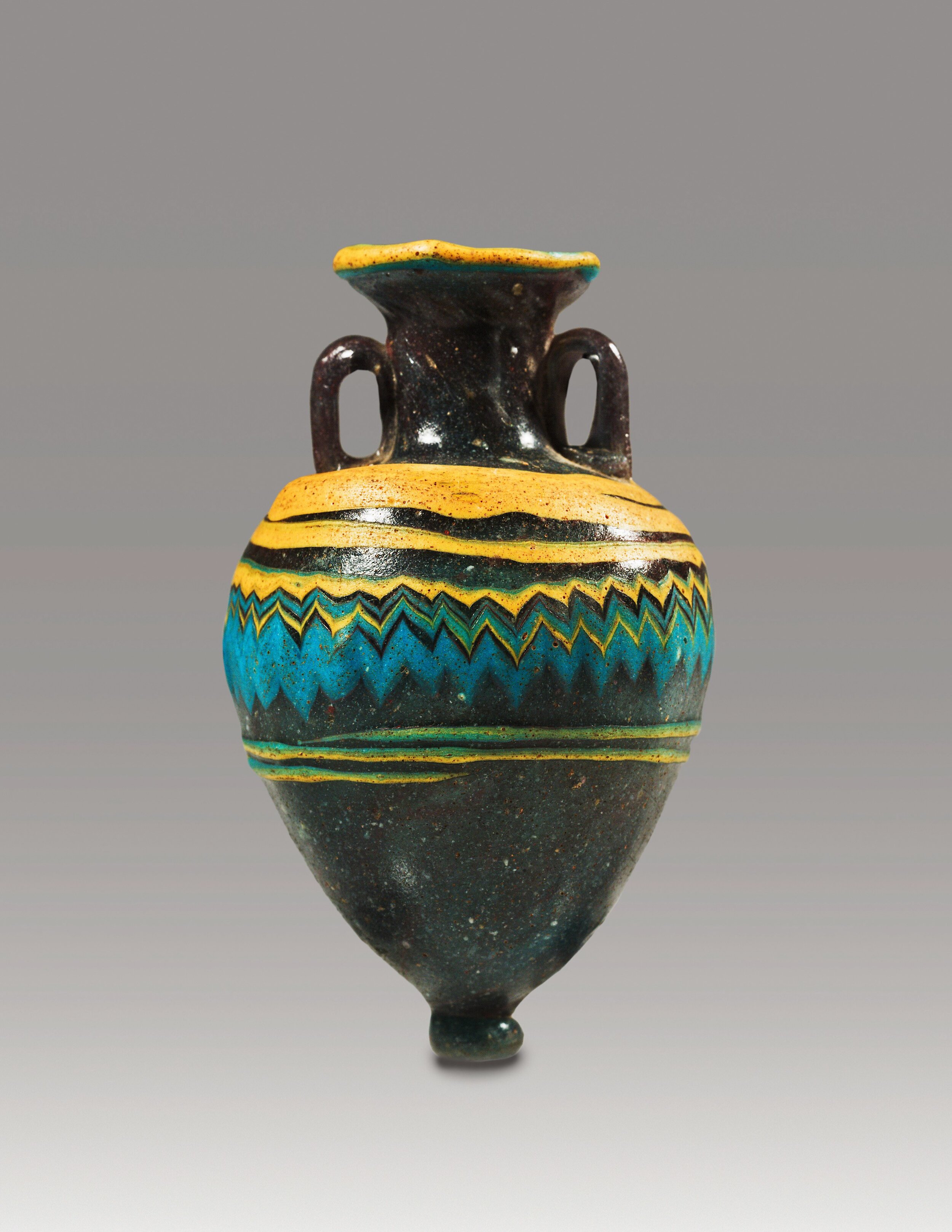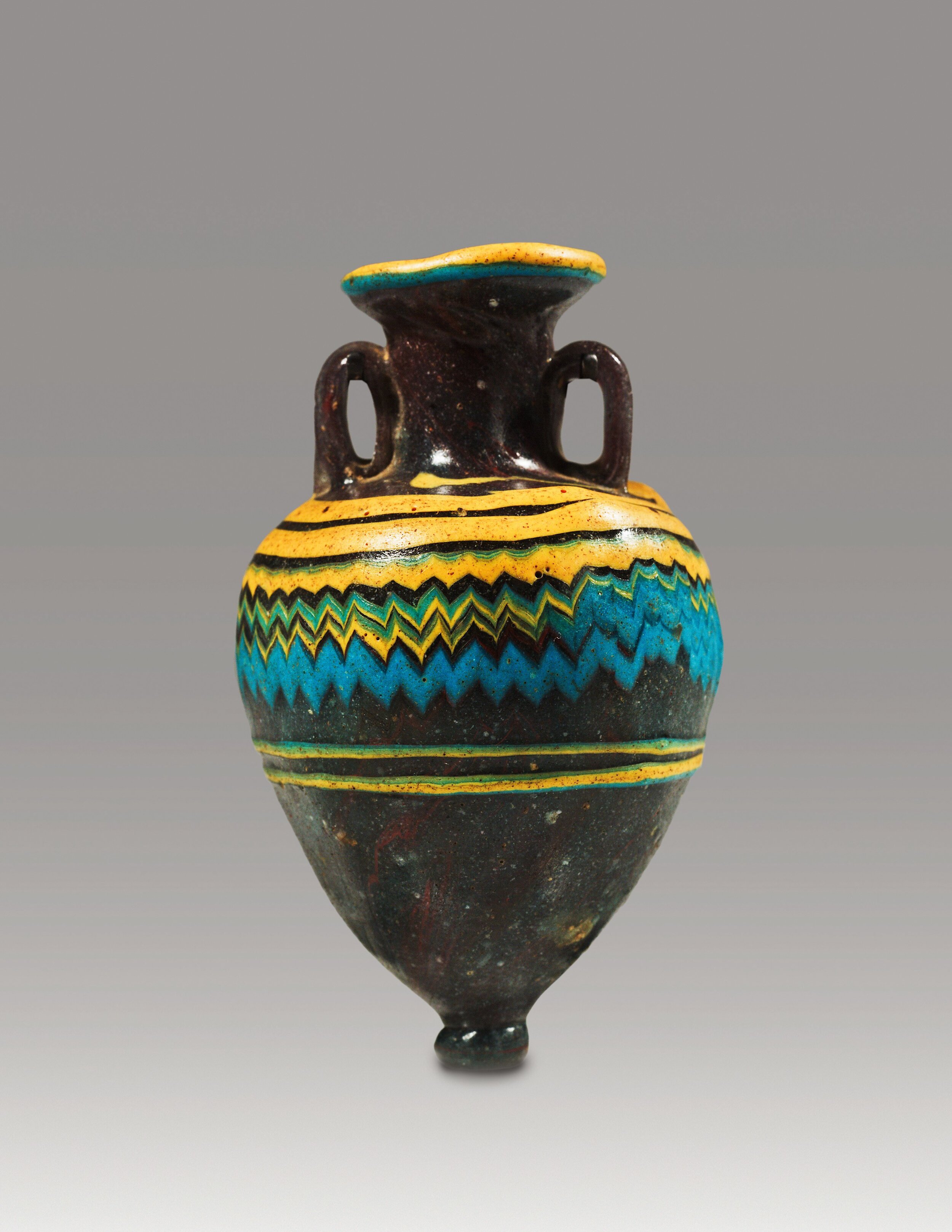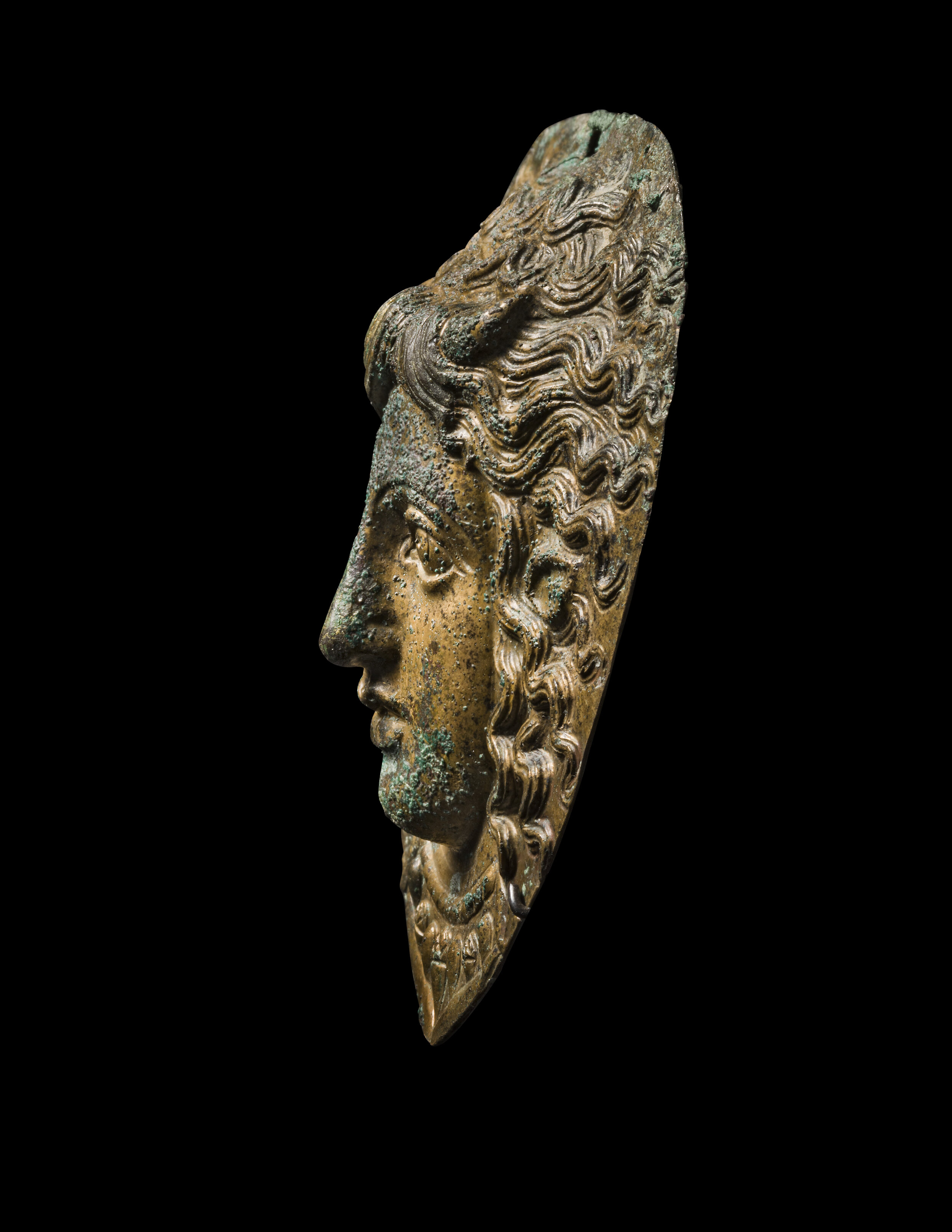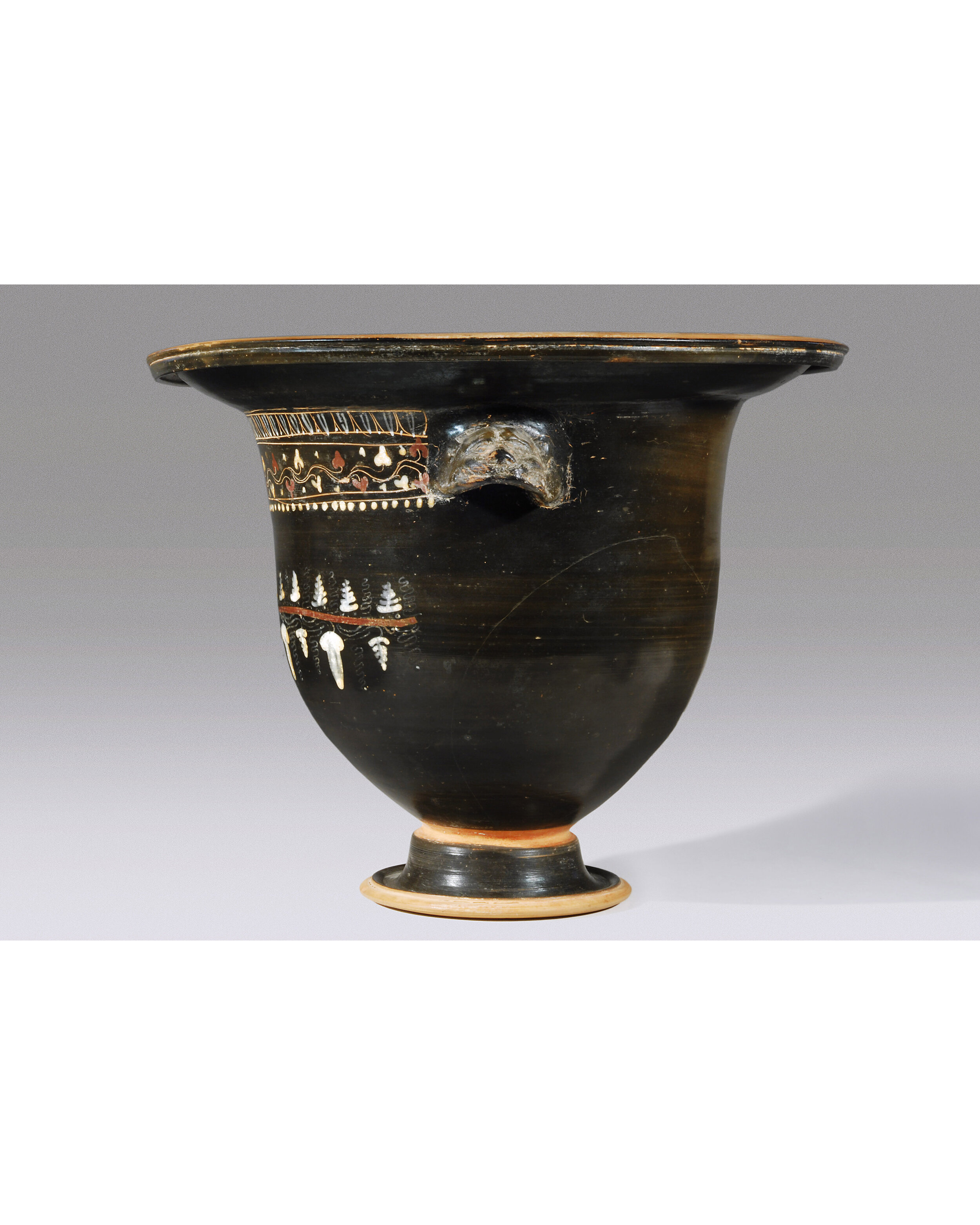Ancient Attic Greek Black Glazed Oinochoe


Ancient Attic Greek Black Glazed Oinochoe
Greek, Attic, 5th century B.C.
Terracotta
H: 22.2 cm
PROVENANCE: Sotheby's New York, June 18, 1991, lot 77; US private collection, New York.
Serial No: 29089
The Oinochoe is one of the most ancient and popular shapes among all Greek vessels. It belongs to the category of pouring vessels and means a wine jug. It is usually a single-handled vase, with or without a pouring spout; as for the proportions, it is taller than it is wide. The scholars recognized ten existing types of oinochoai which varies in profile and the mouth-type. This particular example represents the most developed type with the trefoil pouring spout with rim in two degrees, the ample ovoid body based on the ogee foot, and the sharp junction between neck and body. Seen from above, the trefoil spout looks like an ivy leaf (as the ivy is a plant dedicated to Dionysos, such form alludes to this god, the inventor of wine). The handle of the present jug makes a high loop above the spout which provides with secure and comfortable handling while pouring from it into a bowl. The proportions are both well-measured and coordinated in this elegant vase.
Oinochoai were executed in different media: glass, metal, and clay (bronze and silver). Although the shine of the glaze on the terracotta surface recalls the metallic vessels, it would be probably more correct to say that the black-glazed vases have credit on their own: they do not imitate the former (as there were not really many of them in the society which did not support the attitude for the luxury), they rather create a similar effect. Oinochoai were used in everyday life during the symposia for the distribution of wine between the large vessels (craters, amphorae) and the small ones (cups, bowls); they were necessary to provide the libations during the ritual ceremonies. It is also known from the vase paintings that the vases of this shape were offerings on tombs along with lekythoi.
The highly purified clay slip coating of black-glaze vases, which produced the vitreous black sheen upon firing in the kiln, can be considered equal to some of the best work of Greek ceramic art. Along with the embellishment of stamped designs, the lustrous, highly purified clay slip covering such vases created a valuable decorative effect. It is usually said that such vessels were designed to imitate vessels in silver or bronze. Indeed, the metallic appearance of the surface is obvious, and the rings between the foot and the body, at the root of the neck, and the rim, serve to emphasize the structural divisions, show the influence of the metal work. However, in classical Athens of the 5th century B.C. the luxury was not promoted, and silver vessels would not be available for the imitation. At this period the black-glaze vases substitute them and exist on their own; and vise versa, they were imitated in silver in the 4th century B.C.
BIBLIOGRAPHY
RICHTER G. M. A., Shapes and Names of Athenian Vases, New York, 1935, pp. 18-20.
B. SPARKES B., TALCOTT L., Black and Plain Pottery of the 6th, 5th, and 4th Centuries B.C., The Athenian Agora XII, Princeton,1970, pp. 58-63, pl. 5-10.









